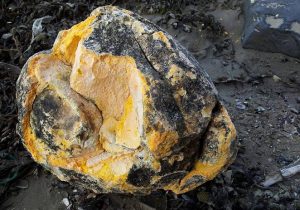We have come across many stories of people stumbling on whale vomit worth millions. The ambergris, as whale vomit is known, is often described as one of the world’s strangest natural occurrences.

It is produced by sperm whales and has been used for centuries, but for many years its origin remained a mystery. While scientists don’t have an exact reason for why ambergris is produced in the whale’s body, some theories suggest that the substance is produced by the whale’s gastrointestinal tract to ease the passage of hard, sharp objects that it may have eaten.
Why is it so expensive?
Whale vomit or ambergris can burn a hole in your pocket. A kilogram of whale vomit can cost you upwards of Rs 1 crore. The wax-like substance is produced in the digestive tract of sperm whales. Ambergris has been called the treasure of the sea and floating gold. It is hugely valuable – it commands a higher price than gold. This is because it is highly prized as a fixative and ingredient in fine perfumes.
It is said to allow the scent to last longer, thanks to the ambrein molecule, which on exposure to a certain type of activated oxygen, exudes fragrance compounds that are known to be lighter and more volatile.

To add to that, the floating gold tends to get lost in the ocean for decades before finding its way to the shore, it is excreted in depths far accessible to humans.
Ambergris is only produced in the guts of sperm whales, which vomit the substance occasionally. Scientists think sperm whales produce ambergris to coat hard and sharp objects they ingest so they don’t damage the whales’ intestines. Such sharp objects found inside ambergris include teeth from giant squids.











